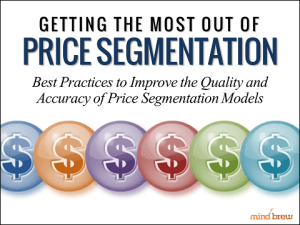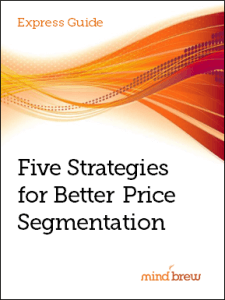During a PricingBrew Journal subscriber-only training seminar, “Getting the Most Out of Price Segmentation,” an attendee posed an intriguing question about price elasticity in B2B…
I’ve heard opposing views on price elasticity in B2B. Some say you can measure it and use it to set better prices. Others say that it doesn’t even exist in B2B. Who’s right?
On the one hand, there are those who argue that demand in most B2B markets is somewhat fixed—business customers buy only what they need and as a result, lower prices cannot stimulate additional demand. On the other hand, there are those who argue that in practice, different prices do influence unit volumes to a degree that can indeed be measured and used to predict outcomes.
It seems to me that in a sense, both sides of the debate are absolutely correct.
It’s true that price elasticity does not manifest in B2B in the manner it’s described in the textbook definitions. In most B2B markets—but not all, mind you—lower prices will not bring new prospective buyers into the market, nor will they cause business customers to buy things they have no “need” to buy otherwise.
At the same time, however, it’s also true that when a company offers a lower price than its competitors, it can see an increase in unit volumes as a result. Granted, it’s a more localized phenomenon and the company isn’t actually affecting overall market demand. But nevertheless, the company is affecting how much more of that demand might be flowing in its direction.
And, the degree to which customers will “shift share” in response to different prices is definitely something that can be measured, modeled, and utilized.
So…maybe the dynamic in B2B doesn’t align to the strict definitions of price elasticity. Who cares? Is that really what’s important?
Whether you call it price elasticity, price sensitivity, price response, win-rate elasticity, share shifting, or just “getting a different slice of the pie”, the important thing is about knowing what’s going to happen when you put different prices into your marketplace, right?
And while debating the label of the phenomenon may be an interesting academic exercise, to my mind, actually measuring the phenomenon and using it to your advantage is a far more profitable use of time and energy.














